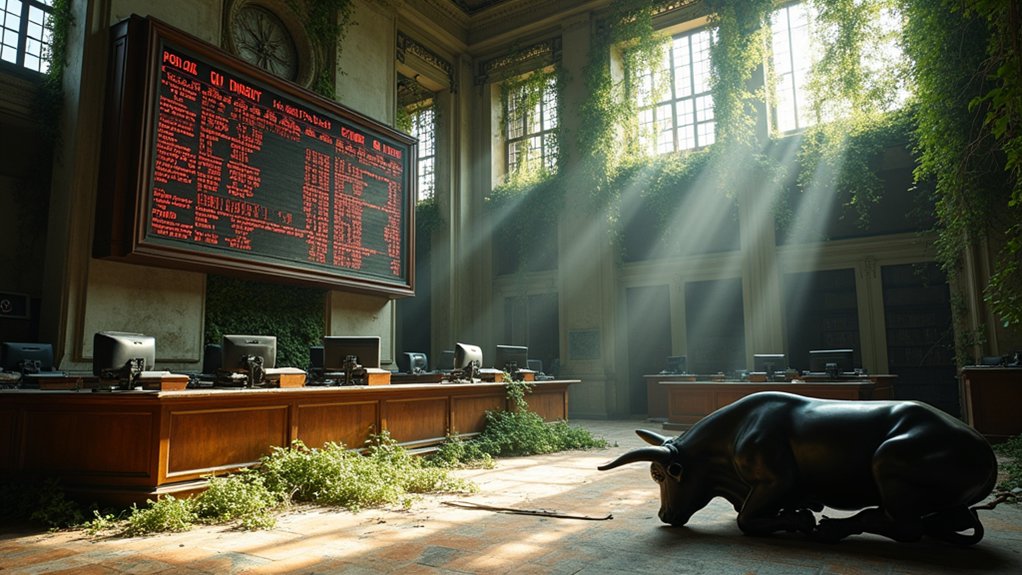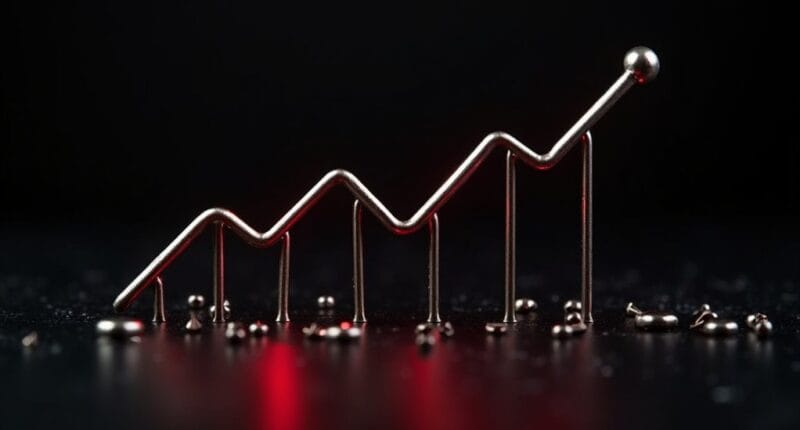History paints a rosy picture of equity returns at 11% annually, but today’s market looks dangerously different. Extreme concentration in mega-cap stocks and sky-high valuations suggest trouble ahead. Forecasts for the next decade project a measly 1-3% return – quite the reality check for bull market enthusiasts. Add in economic wildcards like inflation and interest rates, and those historical returns start looking more like a fairy tale than a reliable roadmap.

Equities have dominated long-term investment returns, churning out an impressive 11% annually over the decades. But here’s the thing – past performance doesn’t guarantee future results. Just look at today’s market concentration, which is at its highest level in a century. A handful of mega-cap stocks are driving the show, and that’s not exactly a recipe for sustainable returns. The S&P 500 Index represents approximately 80% of the total U.S. stock market value, making it a critical economic indicator.
The last decade spoiled investors with a whopping 13% annual return from the S&P 500. Sweet deal, right? Well, don’t get too comfortable. Forecasts for the next decade are painting a much grimmer picture, with projected returns of just 1% to 3%. That’s enough to make any bull market enthusiast choke on their morning coffee. The model’s incorporation of starting equity valuations suggests these lower returns are highly probable.
Stellar market returns may be heading for a reality check, as rosy double-digit gains give way to sobering single-digit forecasts.
Valuation metrics are flashing warning signs too. High forward P/E ratios typically lead to lower long-term returns – it’s just math. Growth stocks are particularly vulnerable to these starting valuations. The Russell 1000 Growth index shows this most clearly, with a strong 0.48 R-squared value. Meanwhile, small-cap stocks bounce around like a rubber ball in a tornado, making them about as predictable as your local weather forecast.
The economy isn’t making things any easier. Corporate profits ebb and flow, central banks play musical chairs with interest rates, and inflation lurks around every corner like an unwanted house guest. When the economy contracts, equities often take it on the chin. Hard.
Market concentration is the elephant in the room. When a few giant companies dominate returns, diversification becomes about as effective as bringing a knife to a gunfight. During market downturns, these concentrated positions can turn ugly fast. Growth stocks, despite their glossy appeal, can drop faster than a hot potato during unstable times.
Sure, bonds might seem boring – like watching paint dry on a humid day. But they’ve proven their worth during equity market meltdowns. Sometimes slow and steady isn’t just a fairy tale motto; it’s a legitimate strategy when equity markets get too frothy.
The truth is, equities’ historical winning streak might be facing its toughest test yet.





